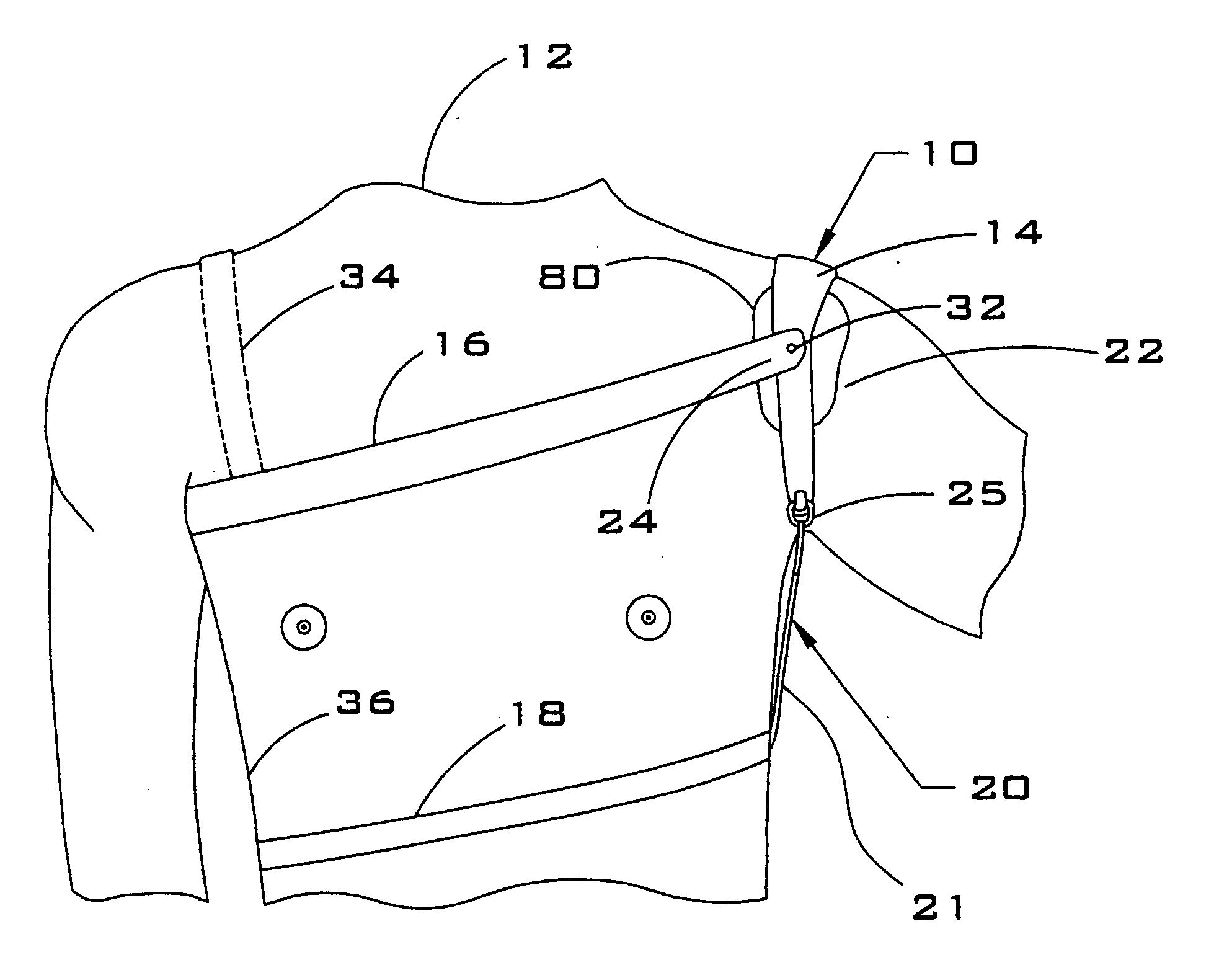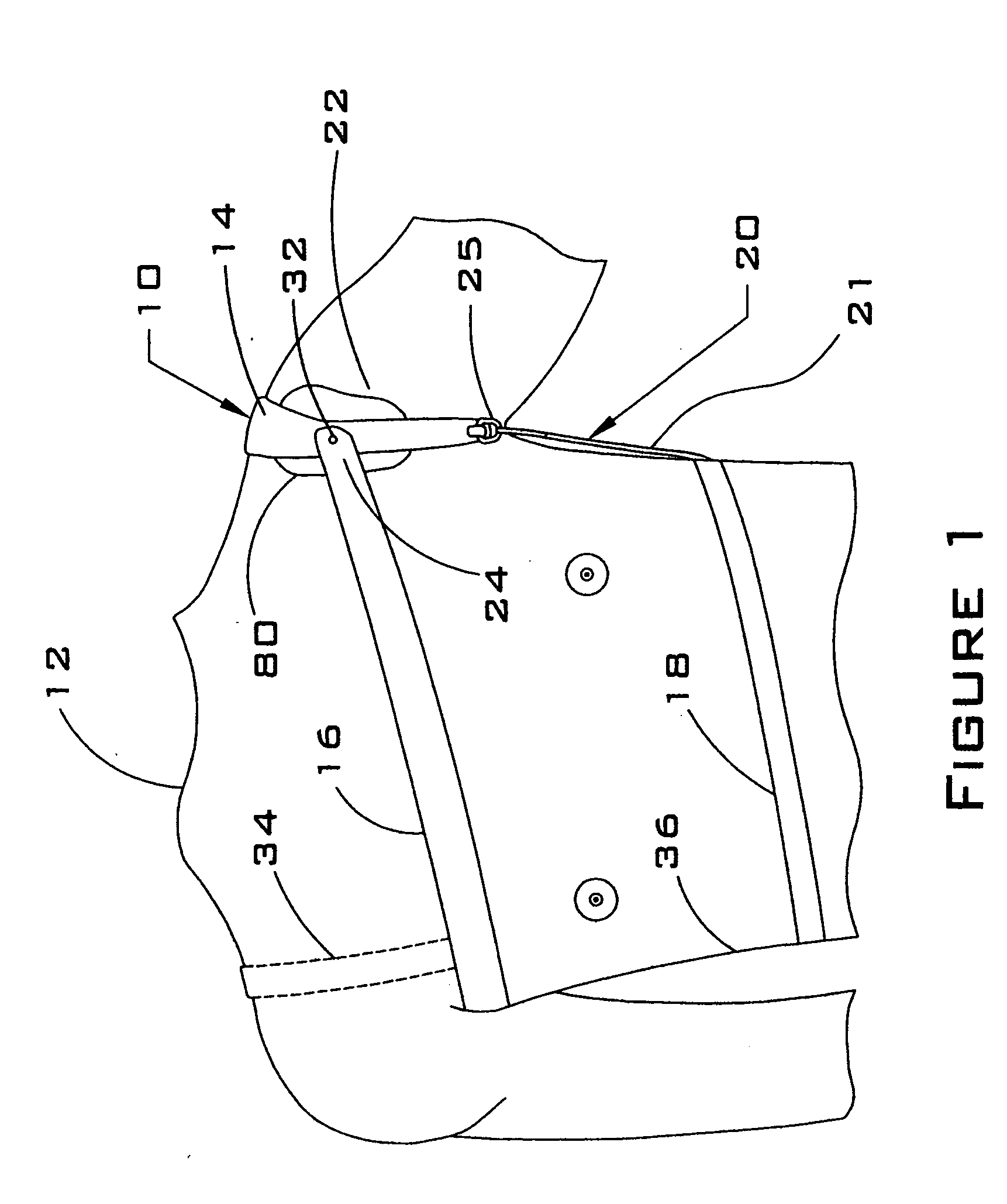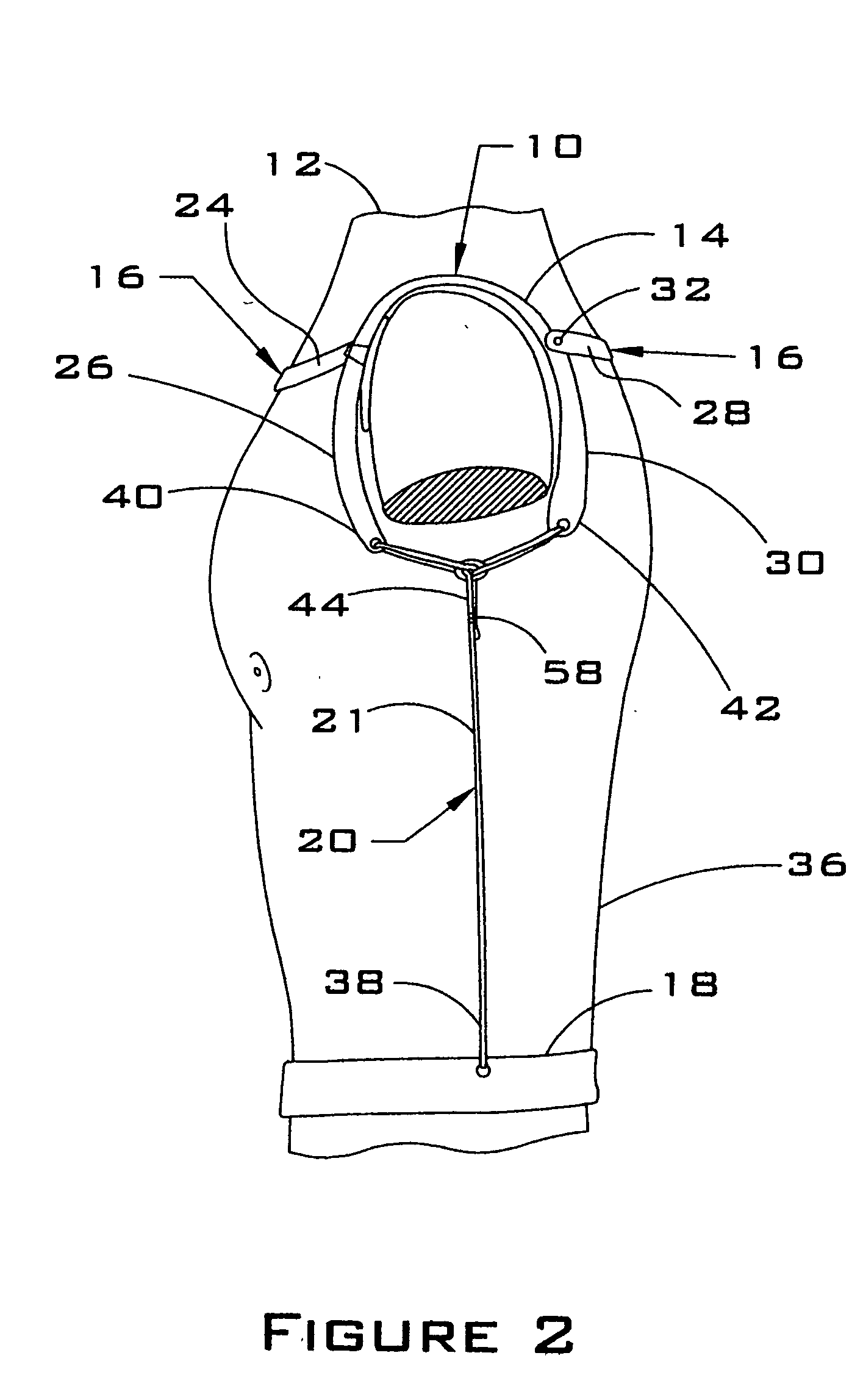Shoulder brace
a shoulder brace and shoulder technology, applied in the field of orthopaedic braces, can solve the problems of increasing the likelihood of anterior dislocation and even greater chances of anterior dislocation, and achieve the effect of increasing the pressure on the shoulder
- Summary
- Abstract
- Description
- Claims
- Application Information
AI Technical Summary
Benefits of technology
Problems solved by technology
Method used
Image
Examples
Embodiment Construction
[0052] Referring now to the nonlimiting example of the drawings, wherein like reference numerals designate identical or corresponding parts throughout the several views, and more particularly to FIGS. 1 through 4, thereof, a shoulder strap 10 being worn by patient 12 is generally shown. Shoulder brace 10 generally includes shoulder joint member 14, and positioning device 20. As shown in FIGS. 1 and 2, shoulder joint member 14 is generally annularly shaped so as to fit generally over a shoulder joint 22 of a patient 12. Brace 10 may optionally include alignment strap 16 which generally has a front end 24 attached to a front arm 26 of shoulder joint member 14 and a rear end 28 attached to a rear arm 30 of shoulder joint member 14. Preferably, front end 24 and rear end 28 of alignment strap 16 are attached to shoulder joint member 14 at a pivot 32. Such a pivot allows the shoulder joint member 14 to rotate relative to anchor strap 16 when a patient raises their arm, without significant...
PUM
 Login to View More
Login to View More Abstract
Description
Claims
Application Information
 Login to View More
Login to View More - R&D
- Intellectual Property
- Life Sciences
- Materials
- Tech Scout
- Unparalleled Data Quality
- Higher Quality Content
- 60% Fewer Hallucinations
Browse by: Latest US Patents, China's latest patents, Technical Efficacy Thesaurus, Application Domain, Technology Topic, Popular Technical Reports.
© 2025 PatSnap. All rights reserved.Legal|Privacy policy|Modern Slavery Act Transparency Statement|Sitemap|About US| Contact US: help@patsnap.com



